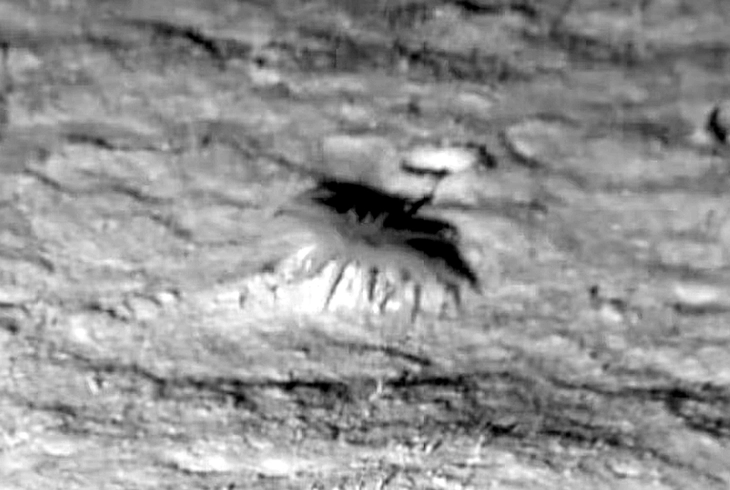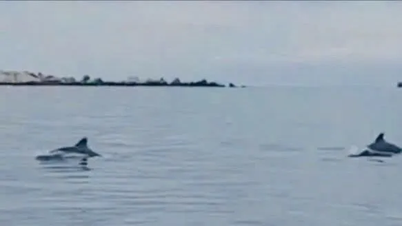
Thanks to cameras built to withstand deep-sea pressure, scientists can capture images and study this mysterious creature - Photo: JENNIFER M. DURDEN/BRIAN J. BETT/HENRY A. RUHL
According to ABC News, the creature is a sea anemone species called Iosactis vagabunda, about which very little was previously known.
Creatures that hunt prey several times larger than themselves
Iosactis vagabunda is a deep-sea tentacled octopus that inhabits the Porcupine Plain, a seabed located off the coast of Ireland. It lies about 4-5km below the surface.
Thanks to cameras built to withstand deep-sea pressure, scientists were able to capture images and study the mysterious creature, according to a paper published in the journal Deep Sea Research Part I: Oceanographic Research Papers .
Iosactis vagabunda typically feeds on detritus from the seafloor, but also preys on polychaete marine worms – which can grow much larger than the anemone itself.
The image shows a sea anemone using its tentacles to scoop food from the water and bring it to its mouth.
Other images show a sea anemone measuring less than 2.5cm long eating a 10cm-long sea worm over the course of 16 hours. After being eaten, the worm's spines can still be seen piercing the anemone's body wall, according to the researchers.
This anemone also spends many hours creating new burrows and frequently moves from burrow to burrow between feeding bouts, a trait that sets it apart from other anemones that stay in one place.
99.999% of the ocean floor remains unexplored
In recent times, marine scientists have been seeking to learn more about the most elusive creatures living in the deepest reaches of the ocean floor and their role in the planet's biodiversity.
As climate change accelerates and the ocean continues to absorb more heat, researchers stress the need to explore more of the seafloor to find ocean-related climate mitigation strategies.
According to Live Science , although the deep ocean floor covers about 66% of the Earth's surface, humans have yet to explore 99.999% of it.
A new study published in the journal Science Advances shows that humans have only "knocked on the door" of 0.001% of the deep sea floor. This number is extremely small.
“There are so many parts of the ocean that we still don’t understand,” Ian Miller, director of science and innovation at the National Geographic Society , which funded the research, said in a statement.
The deep ocean floor, with its extreme pressures and near-freezing temperatures, is home to many strange and often elusive creatures. The region plays a vital role in storing carbon and is believed to be home to many unknown species, some of which may have medical or scientific value.
Source: https://tuoitre.vn/may-quay-he-lo-sinh-vat-bi-an-co-24-xuc-tu-duoi-day-bien-20250515122412223.htm






![[Photo] Discover unique experiences at the first World Cultural Festival](https://vphoto.vietnam.vn/thumb/1200x675/vietnam/resource/IMAGE/2025/10/11/1760198064937_le-hoi-van-hoa-4199-3623-jpg.webp)




















![[Photo] General Secretary attends the parade to celebrate the 80th anniversary of the founding of the Korean Workers' Party](https://vphoto.vietnam.vn/thumb/1200x675/vietnam/resource/IMAGE/2025/10/11/1760150039564_vna-potal-tong-bi-thu-du-le-duyet-binh-ky-niem-80-nam-thanh-lap-dang-lao-dong-trieu-tien-8331994-jpg.webp)







































































Comment (0)